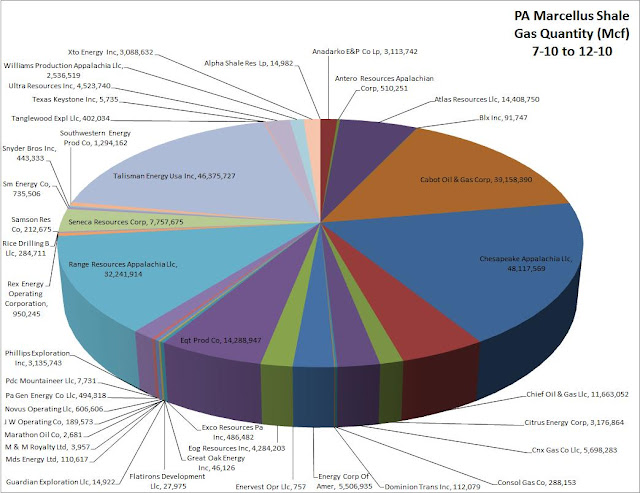The Environmental Impacts of Shale Gas Extraction
By John Stolz, PhD – Duquesne University, Department of Biological Sciences
The Marcellus Shale represents one of the largest reservoirs of unconventional natural gas in the world.It holds the potential, like other gas and oil reserves, to provide a source of energy and jobs for Maryland. It’s extraction, however, is non-trivial and if done without proper safeguards can result in the degradation of water and air quality, and loss of land use. Over the past year I have had to opportunity to observe ongoing natural gas well activities in Western Pennsylvania, attended public hearings,spoken with disaffected individuals, gas company representatives, and people from other states with gas drilling activities. I would like to share with you some of my observations.Shale gas is called “unconventional” because the gas is trapped in the rock and needs to be extracted.The process, called hydraulic fracturing, involves a mixture of water, sand, and chemicals that are injected into the group at very high pressures (~10,000 psi). Each “frac” may require up to 5 million gallons of water. In Pennsylvania, this water is withdrawn from lakes, streams and rivers.
The large volumes of water are transported to a developing “play” by water trucks and deposited in large impoundments. These impoundments can be several acres in size and hold millions of gallons of water. A typical water truck may hold 4,500 gallons, so it takes several hundreds to thousands of truck trips to fill an impoundment.
The depth of the Marcellus Shale is between 5,000 and 6,000 feet below the surface in Western PA,thus a larger drilling rig is needed. A unique feature of these wells is that they are “horizontal” and may extend outwards several thousand feet in several directions. This is needed as the formation is relatively thin (~150’) in most places. A well pad may have 6 to 12 well heads. Each well produces~1,000 tons of drilling waste (ground up rock and drilling mud) that may contain a variety of salts, heavy metals, and naturally occurring radioactive material (NORM). This drilling waste may be buried on site or, more usually, transported to a land fill.
The well pad itself is 4-6 acres, in order to provide space for the trucks and containers, and impoundments for drilling mud, waste, and fracking. Once the horizontal has been drilled and cased, it is “fracked”. This process involves many vehicles, containers of sand and chemicals, the mixing trucks with fracking chemicals, and the diesel compressors (~200 vehicles). Hence the need for more space than a conventional well. During completion, the well is usually flared.
A completed well pad will typically have several well heads (the “Christmas tree), separators, small compressors, and condensate tanks (to handle the produced water). As long as a well pad is active (the well can be restimulated or used to drill a deeper formation), the footprint is still 4-6 acres. Depending on the number of wells, there may be as few as two condensate tanks or many more. They are sources of volatile organics as they are designed with “blow off” relief valves. Invisible to the naked eye these volatiles can be seen with specially designed infrared cameras.
The amount of produced water may also vary. For Marcellus, the initial flow back has been only about10 to 20% of the amount of fluids that were injected. Over time this “produced water” increases in total dissolved solid (TDS) content. The “brine” can be ten times saltier than seawater, contain high concentrations of bromide, chloride, strontium, and barium, as well as arsenic and uranium. In Pennsylvania, while the condensate tanks have hazard placards indicating the toxicity and flammability of the flow back water, the truck only is labeled “residual waste” and “brine”. Publicly owned wastewater treatment plants (POTWs) are allowed to take up to 1% of their total daily output. In Pennsylvania, there are currently at least 63 POTW’s permitted to take produced water. POTWs are not designed to“treat” produced water but merely dilute the salts.
This has resulted in increases in total dissolved solids(TDS), bromide in particular, in local rivers. The increase in TDS and bromide has caused problems with public drinking water facilities as the disinfectant process (chlorination) creates trihalomethanes (TMH, bromoform and chloroform). As a result many public drinking water facilities in the area have had to convert from chlorination to chloramination to reduce the formation of THMs. However, chloraminated water can cause the leaching of lead from older pipes and fittings. And there will be spills. Over the past 2.5 years, the PA-DEP has cited the industry with over 1,600 violations. Many of these were for improperly constructed impoundments, chemical spills, and surface contamination.
There are other aspects to the industry as well. Methane is a colorless, odorless gas, that needs to be odorized with mercaptan. The product from the Marcellus in Western PA is not dry gas but a combination of other organics as well. Thus the gas needs to be “dried” in refineries. Propane and butane are “cryo” separated in these facilities. These complexes are a source of volatile organic compounds and are frequently flaring off residual organics. They are also flanked by compressor stations that pressurize the gas for the pipeline.
The industry can move very quickly as has been recently demonstrated in Hickory-Houston, PA area,where since 2005 there are now over 80 well pads, impoundments, compressor stations, and other gasfacilities within a five mile radius.
The extraction of unconventional natural gas is heavy industry involving large tracts of land, heavyequipment and vehicles, and an extensive array of pipelines, compressor stations, and processing facilities. The level of surface disturbance is extensive, as has been demonstrated elsewhere (e.g.,Colorado, Wyoming, Texas, Arkansas, Louisiana). Existing industries such as agriculture, tourism, outdoor ventures (e.g., fishing, hunting, and camping), and wineries, will be lost or significantly impacted. In Pennsylvania there have already been loss and contamination of well water, and loss of livestock and quarantined herds after exposure to contaminated water.<
Summary of Environmental Impacts
Water
- The amount needed for fracking (5 million gallons/frac)
- Loss of well (aquifer) water through disruption or contamination
- Gas migration causing methane contaminated water
- The fate of the produced water (“treated” at POTWs)
- Degradation of water quality in local streams and rivers
- Degradation of drinking water quality (need to purchase bottled water)
Land usage
- Large amount of acreage needed for well pads and impoundments
- As long as a well can be “restimulated”, the well pad will remain active
- Leased areas (former private and public lands) become restricted access
- Public lands and parks no longer “public” as they are off limits due to safety
Exposure to toxic chemicals (spills, aquifer contamination)
- Fracking fluids
- Produced water contaminated with organics, salts, heavy metals, and NORMs
- Failed or improper casings lead to aquifer contamination
Traffic and road degradation
- Significant increase in trucks and vehicles cause road and bridge deterioration
- Trucks may exceed weight and height limits
Noise
- Heavy equipment, increased traffic,
- Low frequency sounds during fracking
- Compressors and compressor stations
Air pollution
- Increased vehicle traffic
- Well flaring
- Release of VOC’s from well installations (condensate tanks are vented by design)
- Compressor stations
- Well blow outs
Property devaluation
- Mortgages and home equity loans jeopardized by presence of wells
- Mine subsidence insurance compromised or negated
- Land owner ultimately responsible for taxes and environmental damage
EMS and emergency procedures
- Evacuation plans must be in place for populated areas (a single well blow out can affect more than 1 mile radius)
- EMS, police and fire must be trained to handle emergencies (well and impoundment fires, evacuations)
Increases taxes to cover infrastructure damage, additional public services and security.
John F. Stolz, Ph.D.
Professor, Department of Biological Sciences
Director, Center for Environmental Research and Education
Duquesne University
Pittsburgh, PA 15282


